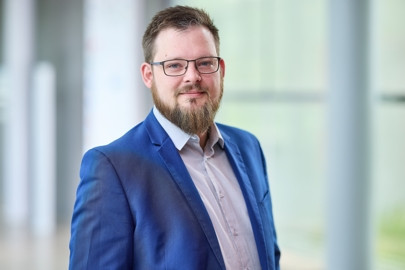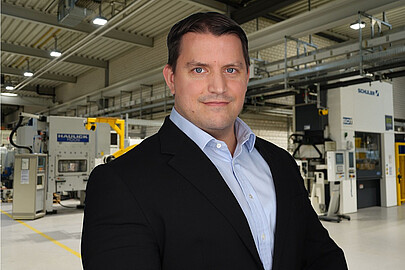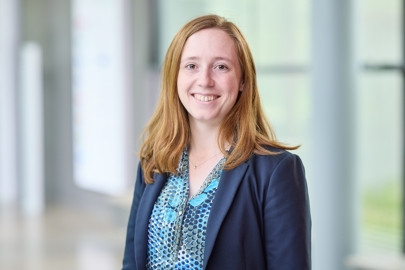
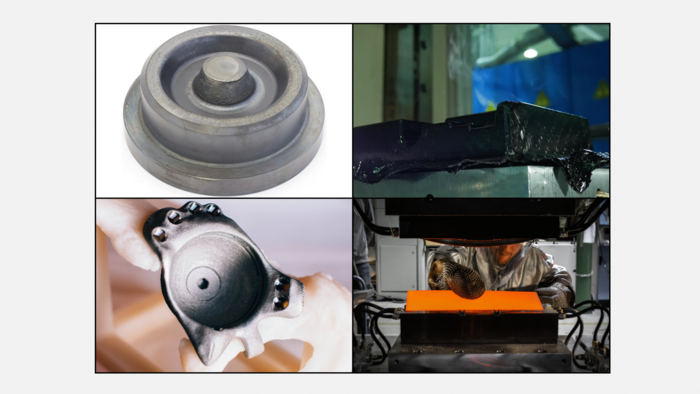
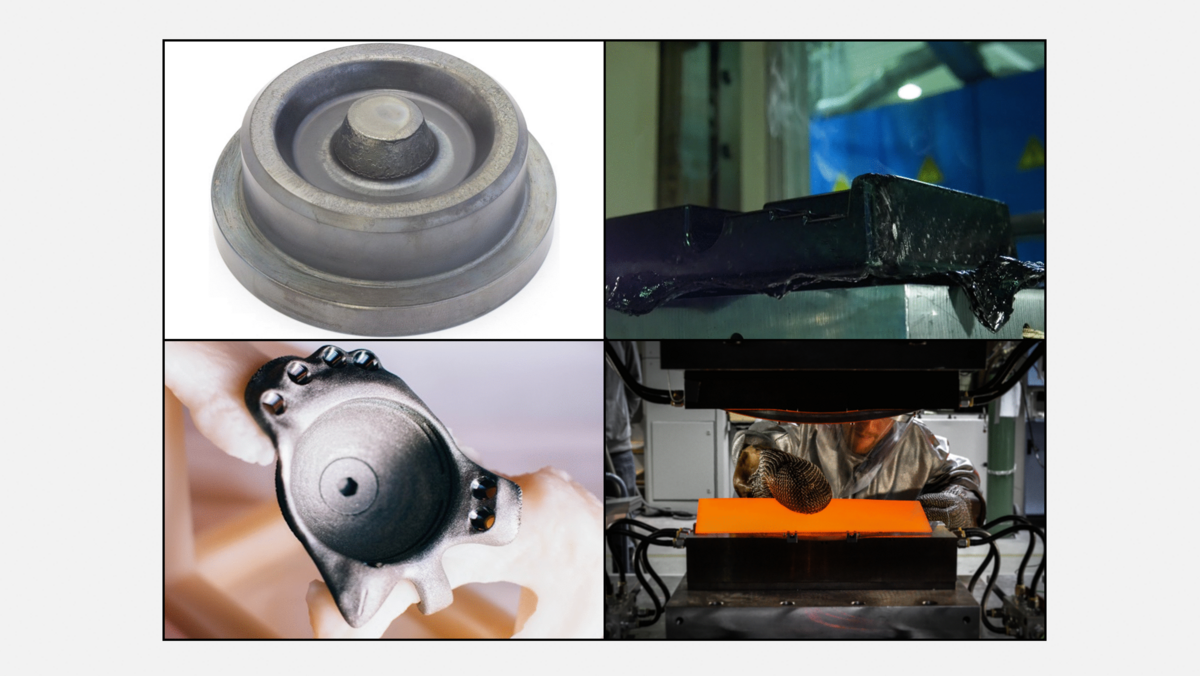
In four competence teams, the employees at the Institute of Forming Technology and Machines deal with interdisciplinary research topics. Within the framework of these teams, the topic-related know-how of the employees is bundled and interdisciplinary approaches to solutions are pursued. The team leaders of the competence teams are available as contact persons for questions regarding basic, application and contract research in the following subject areas:
In four competence teams, the employees at the Institute of Forming Technology and Machines deal with interdisciplinary research topics. Within the framework of these teams, the topic-related know-how of the employees is bundled and interdisciplinary approaches to solutions are pursued. The team leaders of the competence teams are available as contact persons for questions regarding basic, application and contract research in the following subject areas:
-
Contact
![]()
![]() René Laeger, M. Sc.Research Staff
René Laeger, M. Sc.Research Staff
Mobile![]()
![]() René Laeger, M. Sc.Research Staff
René Laeger, M. Sc.Research Staff
Mobile -
Motivation
Tribology in forming technology
- Tool surfaces in contact with semi-finished products are exposed to a collective of diverse stresses
- These occur in combination and lead to various causes of failure, including wear
- Wear leads to premature end of tool life
Motivation
- Increase in tooling component life
- Increasing the efficiency of industrial processes
- Numerical wear prediction
-
Thematic focus
Surface modification
- DLC layer systems
- Hot work tool steels suitable for nitriding
- Nitriding with expansion joints
- Plasma forged dies
Cooling lubrication
- Dry forming
- Integrated mould cooling (e.g. cooling channels, heat pipes, etc.)
- Alternative lubricants (e.g. solid lubricants, boron nitride, etc.)
Characterisation
- Material characterisation
- Component wear
Process simulation
- Tool loading in forming processes (e.g. mechanical loads or temperature input)
- Advanced process calculations e.g. hardness and wear prediction
- Image competence fields
-
Contact
![]()
![]() Jörn Wehmeyer, M. Sc.Research Staff
Jörn Wehmeyer, M. Sc.Research Staff
Mobile![]()
![]() Jörn Wehmeyer, M. Sc.Research Staff
Jörn Wehmeyer, M. Sc.Research Staff
Mobile -
Motivation
Lightweight construction in the automotive industry
- Reduction of CO2-emission
- Increasing the range of electric vehicles
- Improving safety and vehicle dynamics
Motivation
- Load and weight optimised components
- Lightweight mixed construction of metal-FRP, plastic-FRP, FRP-FRP
- Striving for solutions suitable for large-scale production
- Lightweight materials combined with lightweight manufacturing
- Function integration
-
Thematic focus
Technology
- Variothermal hybrid forming
- One- and two-stage isothermal hybrid forming
- Combined sheet metal forming and compression moulding
- Tool construction
Process development
- Simulation-based process design and optimisation
- Individual processes (e.g. sheet metal forming, GMT compression moulding, etc.)
- Combined processes (e.g. thermoforming and compression moulding)
Modelling
- Material modelling
- Modelling bond strength
- Boundary layer in sandwich composites
Characterisation
- Material characterisation (e.g. organic sheet, UD laminate, GMT, etc.)
- Component and composite characterisation
- Image competence fields
-
Contact
![]()
![]() Janina Siring, M. Sc.Research Staff
Janina Siring, M. Sc.Research Staff
Mobile![]()
![]() Janina Siring, M. Sc.Research Staff
Janina Siring, M. Sc.Research Staff
Mobile -
Motivation
General objective
- Improve people's quality of life
- Preclinical evaluation of biomechanics
- Reduction of revision operations
- Study long-term interaction between implant and bone
- Increase patient safety
Motivation (Topic-specific) à to each a key point
- Design of load-optimised implants
- Longer implant life
- Prediction bone behaviour
- Examination of the tribological system of the sliding pairs
- Transfer of determined loads by means of MBS to an FE model
-
Thematic focus
Prosthesis analysis
- Design of prostheses to withstand load
- Tribological optimisation of the sliding pairs
Bone model
- Determination of geometry data and bone data based on CT images
- Transfer of the data into a FE model
- Calculation of the influence of implants on bone
Multi-body simulation
- Implementation of recorded kinematic and kinetic data
- Determination of the resulting forces
- Transfer of loads as boundary condition for the FE model
Characterisation
- Biomechanical testing of biological materials
- Investigation of implants under static load
- Development of specific test setups
- Impressions of the main topics
-
Contact
-
Motivation
General objective
- Lightweight construction in the automotive industry
- Process combination of shaping and heat treatment
- Reduction of CO2-emission
- Improving safety and vehicle dynamics
- Increasing the range of electric vehicles
Objectives
- Load and weight optimised components
- Striving for solutions suitable for large-scale production
- Energy-optimised process solutions
- Lightweight materials combined with lightweight manufacturing
- Function integration
-
Thematic focus
Process development
- Process design and optimisation
- Combined processes (GMT extrusion and mould hardening)
- Development of equipment for conductive rapid heating
- Development of processes for tailored tempering
Alternative materials
- Steel alloys (martensitic chromium steels, medium manganese steels)
- Material-specific process and heat treatment parameters
- Hot and semi-hot stampingof 7000-series aluminium alloys
- Material combinations with fibre composite materials
Numerical mapping
- Forming simulation
- Material characterisation and modelling
- §Microstructure prediction (CCT/TTT-, forming-CCT/TTT-diagrams)
Process monitoring
- Temperature sensor system
- Acoustic emission analysis
- Wear forecast
- Impressions of the main topics



